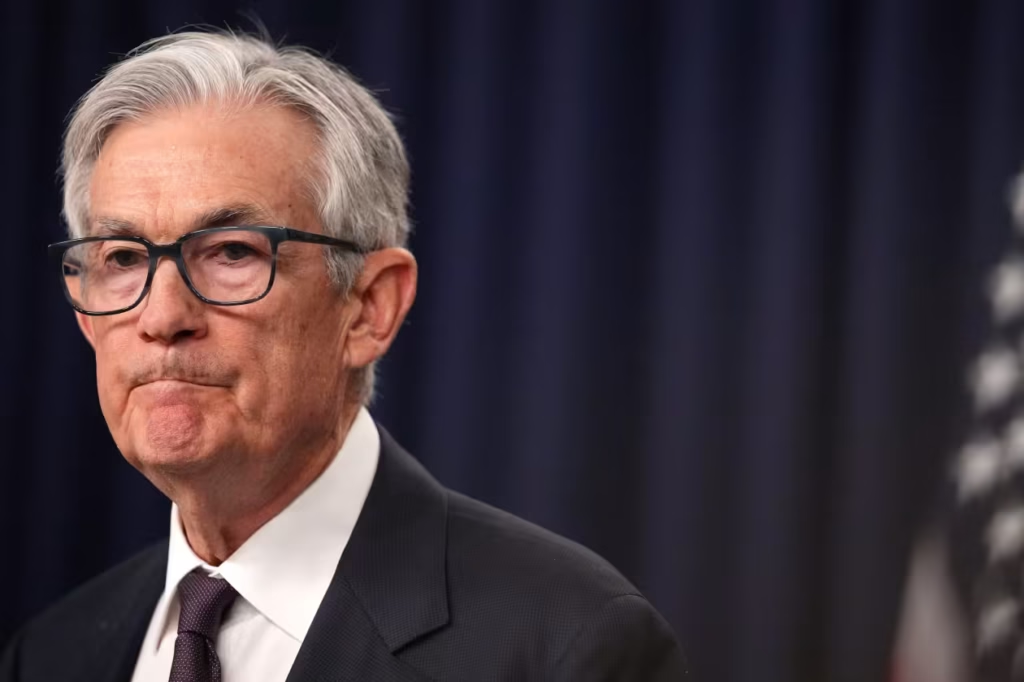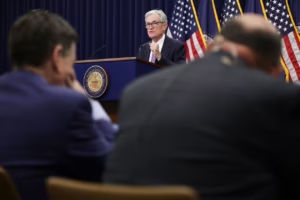Jerome Powell, the chair of the Federal Reserve, stated Thursday that the U.S. economy may be experiencing a period of unexpected shortages of essential goods and that the central bank should resume making battling inflation its top priority.
Powell stated at a Fed research conference that “we may be entering a period of more frequent and potentially persistent supply shocks, a difficult challenge for the economy and for central banks.”
The tariffs imposed by President Donald Trump are a type of supply shock since they force companies to pay more for components of their products that are manufactured elsewhere. Like the epidemic, severe storms like the heavy rains in western North Carolina can cause major manufacturers to go out of business.
A central bank finds supply shocks challenging since they harm growth while simultaneously driving up prices. Demand may suffer if the Fed responds by raising interest rates.
According to a 2023 Bank of International Settlements study, Fed officials’ conflicts grew when the economy experienced a supply shock.
The Fed is nearing completion of a five-year review of its policy framework, which outlines its communication, tools, and strategy.
Powell stated in his address that government officials are thinking on “discrete but important updates to its framework that guides decisions.”
Adopted in 2020, the current Fed plan did not prioritize supply shocks. The Fed’s primary problem was that its benchmark interest rate was frequently stuck at zero. Fed officials were concerned about deflation, or falling prices, which may also be detrimental to an economy.
Long-term interest rates are significantly higher currently than they were in the 2010s because to the pandemic. Powell stated that these higher rates “reflect the possibility that inflation could be volatile going forward than in the intercrisis of the 2010s,” among other things.
Because it does not specify how the Fed would respond to a spike in inflation, the Fed’s 2020 framework has drawn criticism.
Powell said that the Fed is considering changing some of the strategy’s main components.
The Federal Reserve stated in the 2020 framework that it would not raise interest rates only because the labor market was becoming more robust. It stated that it would only consider “shortfalls” in employment.
Economists at the time were concerned that this would prevent the Fed from fighting inflation in a “preemptive” manner.
Powell denied this in his speech, but he did state that a change was being contemplated.
“In our discussions so far, participants have indicated that they thought it would be appropriate to reconsider the language around shortfalls,” Powell stated.
According to Powell, the second shift is probably due to the Fed’s 2020 plan to allow some inflation beyond its 2% target in order to offset previous undershoot.
According to Sal Guatieri, senior economist at BMO Capital Markets, the average-inflation targeting shift in inflation occurred at the wrong moment.
In a note to clients, Guatieri stated, “I’m not saying that led to the eventual spike [in inflation] to four-decade highs, but it likely didn’t help.”
Powell stated in his address that the new approach will take into account the experience of the 2021 inflation spike. For its new structure, the Fed will make sure it “is robust to a wide range of economic environments and developments,” he continued.
According to Krishna Guha, vice chairman of Evercore ISI, the Fed would shift away from a strategy that favored rate decreases and softer monetary policy as a result of the changes in these two crucial components.
According to Guha, some of the criticism leveled at the Fed’s 2020 approach is exaggerated.
“But at a minimum, the 2020 framework was not relevant to the new challenge the Fed faced, did not help frame the actions taken and might have contributed in the background to overreach on the pandemic-era guidance,” he stated.
Powell stated in his comments that the central bank is still concerned that interest rates could return to zero.
“While our policy rate is currently well above the lower bound, in recent decades, we have cut the rate by about 500 basis points when the economy is in recession,” Powell stated. Currently, the Fed’s benchmark rate falls between 4.25% and 4.5%.





